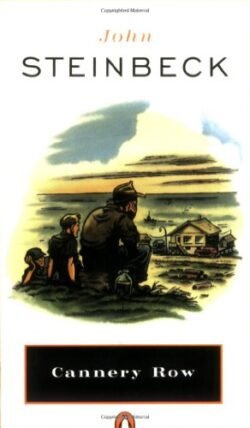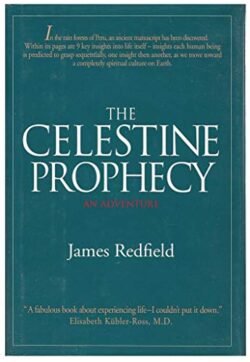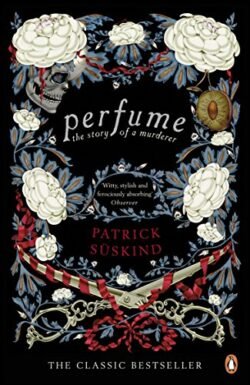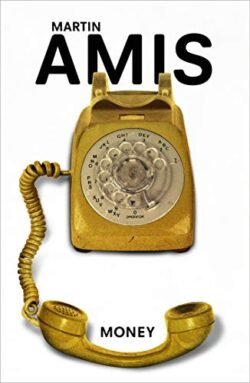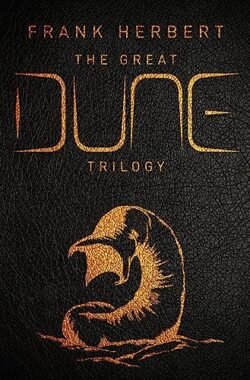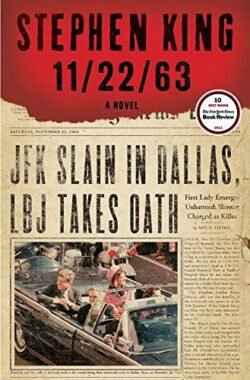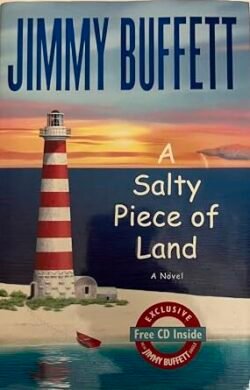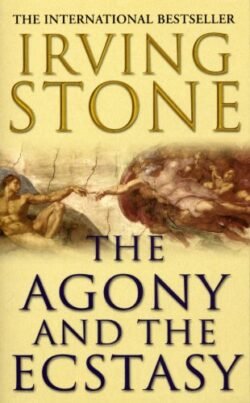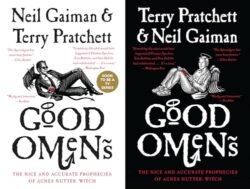“Cannery Row” by John Steinbeck, first published in 1945, is a novel set in the Monterey Bay area of California during the Great Depression. This classic piece of American literature is known for its rich depiction of life in a small cannery district, focusing on the lives of its inhabitants who are considered outcasts by mainstream society. The narrative centers around a group of characters who live on the fringes of society, including Doc, a marine biologist; Mack and the boys, a group of good-natured bums living in a warehouse; and Dora Flood, the owner of a local brothel. Steinbeck’s novel is a mosaic of interconnected stories, mixing humor and sadness, to paint a picture of a community bound by its shared humanity and struggles. Character Analysis Doc: Doc is portrayed as the moral center and most respected member of the Cannery Row community. A kind-hearted and introspective marine biologist, he is a friend to all and acts as a stabilizing force within the community. His laboratory is a hub of activity and a sanctuary for the various characters who seek his advice and companionship. Mack and the Boys: Mack and his group of friends, known as “the boys,” are central to the novel’s exploration of friendship and loyalty. Despite their lack of ambition and penchant for getting into trouble, they are depicted with affection and humanity by Steinbeck. Their attempts to do good, most notably their efforts to throw a party for Doc, often result in comical mishaps but underscore their underlying good intentions. Dora Flood: Dora Flood runs the Bear Flag Restaurant, a brothel that serves as another focal point of community life on Cannery Row. She is depicted as a strong, compassionate woman who looks after her girls and contributes to the community, showing generosity in times of need. Themes and Analysis Community and Isolation: “Cannery Row” explores the dynamics of community life, highlighting how individuals come together to form a cohesive group despite their personal struggles and societal isolation. Humanity and Compassion: The novel emphasizes the intrinsic worth of every individual, advocating for compassion and understanding toward those who live on the margins of society. Nature and Science: Through Doc’s character and work, Steinbeck weaves in themes of nature and science, celebrating the beauty and complexity of the natural world. “Cannery Row” is a testament to John Steinbeck’s profound skill in capturing the essence of human life and the enduring spirit of a community. With its rich ensemble of characters and vivid setting, the novel offers a timeless reflection on the complexities of life, the importance of relationships, and the capacity for kindness and resilience in the face of hardship. Steinbeck’s affectionate portrayal of Cannery Row and its inhabitants celebrates the beauty found in the simplicity of everyday life, making it a beloved classic in American literature. If the summary caught your interest, Consider reading the full book on AbeBooks. Explore this book on AbeBooks
The Celestine Prophecy: An Adventure
“The Celestine Prophecy: An Adventure” by James Redfield, first published in 1993, is a novel that blends spiritual and adventure elements to explore various psychological and spiritual ideas rooted in New Age philosophies. The story is presented as a manuscript containing nine key insights that humanity is predicted to grasp as we enter a new era of enhanced consciousness and spiritual awakening. Set in Peru, the narrative follows the protagonist’s journey to understand and live according to these insights, which are primarily focused on understanding energy fields, the power of thought, and synchronicities that guide us towards our destinies. Through encounters with various characters who elucidate each of the nine insights, the protagonist—and the reader—are invited to consider how these spiritual truths can be applied to personal growth and the betterment of society. Character Analysis The novel does not focus on character development in the traditional sense but uses its characters as vehicles to convey the nine insights. The protagonist serves as an everyman figure, allowing readers to place themselves in the story and explore the implications of the insights for their own lives. Themes and Analysis Spiritual Awakening: Central to the novel is the theme of an impending global spiritual awakening, where individuals become more attuned to their spiritual nature and the interconnectedness of all life. Energy and Consciousness: The insights describe a world where human beings can perceive and interact with energy fields, emphasizing the impact of positive and negative thoughts on oneself and the environment. Synchronicity: A key concept in the book is synchronicity, or meaningful coincidences, which are presented as signs that guide individuals on their spiritual paths. “The Celestine Prophecy: An Adventure” has captivated readers with its optimistic portrayal of human potential and its vision of a world transformed by a deeper understanding of spiritual principles. While its reception has been mixed, with some critics questioning the depth and originality of its insights, the novel has undeniably touched a chord with many who are searching for meaning and connection in a rapidly changing world. James Redfield’s work invites readers to explore the possibility that there is more to life than the material world and that each person has a role to play in the evolution of human consciousness. Whether viewed as a spiritual guidebook or a compelling adventure story, “The Celestine Prophecy” remains a significant cultural artifact of the New Age movement, offering a hopeful perspective on personal and collective transformation. If the summary caught your interest, Consider reading the full book on AbeBooks. Explore this book on AbeBooks
Perfume: The Story of a Murderer
“Perfume: The Story of a Murderer” by Patrick Süskind is a captivating and darkly intriguing novel published in 1985. Set in 18th-century France, the story follows Jean-Baptiste Grenouille, an orphan with an extraordinary sense of smell but devoid of personal odor. This peculiarity sets him apart from others and drives him to become one of the greatest perfumers in Paris. However, Grenouille’s obsession with creating the ultimate scent leads him down a macabre path of murder, as he seeks to capture the essence of innocence and beauty by killing young women and extracting their scent. Süskind’s novel explores themes of obsession, isolation, and the quest for perfection through the twisted journey of its unique protagonist. Character Analysis Jean-Baptiste: Grenouille Grenouille is a profoundly isolated and morally ambiguous character, whose extraordinary olfactory gift becomes both a blessing and a curse. His inability to form normal human connections and his absence of personal scent render him almost invisible to society. Grenouille’s obsession with creating the perfect perfume drives the narrative, leading to his descent into madness and murder. Despite his heinous acts, Süskind skillfully crafts Grenouille’s character in a way that evokes a complex mixture of horror, pity, and fascination. Themes and Analysis Obsession and the Quest for Perfection: The novel centers on Grenouille’s obsessive quest to create the world’s most sublime perfume, symbolizing the human drive for power, recognition, and transcendence through perfection. Isolation and Identity: Grenouille’s isolation, both physically due to his lack of scent and emotionally through his inability to connect with others, raises questions about identity and the human need for recognition and acceptance. The Nature of Beauty and Horror: “Perfume” juxtaposes the beauty of scent and the art of perfumery with the horror of murder and moral decay, exploring the thin line between sublime beauty and absolute evil. “Perfume: The Story of a Murderer” is a masterfully written novel that defies easy categorization, blending elements of horror, historical fiction, and psychological thriller. Patrick Süskind’s richly detailed narrative and the deeply unsettling journey of Jean-Baptiste Grenouille offer a unique and unforgettable exploration of the darker aspects of human nature and the relentless pursuit of beauty at all costs. The novel remains a provocative and compelling read, inviting readers to ponder the complexities of obsession, the nature of genius, and the elusive essence of humanity. If the summary caught your interest, Consider reading the full book on AbeBooks. Explore this book on AbeBooks
Money
“Money: A Suicide Note” by Martin Amis is a seminal work of British literature, first published in 1984. Part of the postmodern literary movement, the novel is known for its dark humor, complex narrative structure, and incisive critique of consumer culture. The story is narrated by John Self, a hedonistic and self-destructive director of TV commercials who embarks on an increasingly chaotic journey through London and New York. As Self indulges in a lifestyle of excess, financed by his seemingly limitless credit, his life begins to spiral out of control, mirroring the moral and spiritual bankruptcy of the society around him. Amis’s “Money” is both a character study of a man consumed by his desires and a societal critique, offering a scathing commentary on the corrosive effects of capitalism and consumerism. Character Analysis John Self John Self, the protagonist, is emblematic of the excesses of the 1980s, embodying the greed, lust, and gluttony that Amis critiques. Despite his financial success, Self is deeply unhappy, struggling with issues of identity, self-worth, and the meaning of life. His journey is one of self-discovery, albeit through a lens of self-destruction, making him a compelling if not always sympathetic character. Self’s interactions with a cast of eccentric characters, including his girlfriend Selina Street, his manipulative American producer Fielding Goodney, and various other caricatures of the era, reveal the hollowness and absurdity of the world he inhabits. Themes and Analysis Consumerism and Its Discontents: The novel explores the vacuous nature of consumer culture, depicting a world where material wealth is equated with happiness, leading to moral and existential emptiness. Identity and Self-Destruction: Through John Self’s character, Amis examines themes of identity in a postmodern world, where the self is fragmented and authenticity is lost amid the pursuit of pleasure and wealth. Satire of the 1980s: “Money” is a biting satire of the 1980s, capturing the decade’s spirit of excess, the rise of neoliberal economics, and the cultural obsession with wealth and celebrity. “Money: A Suicide Note” is considered one of Martin Amis’s masterpieces, praised for its wit, linguistic inventiveness, and sharp social commentary. The novel stands as a powerful critique of the era it depicts, offering a bleak yet humorous look at the consequences of unchecked consumerism and the search for meaning in a materialistic society. Through the tragicomic figure of John Self, Amis crafts a narrative that is both a personal odyssey and a broader cultural critique, making “Money” a landmark work in contemporary literature. If the summary caught your interest, Consider reading the full book on AbeBooks. Explore this book on AbeBooks
The Great Dune Trilogy
“The Great Dune Trilogy” encompasses the first three novels of Frank Herbert’s seminal science fiction series: “Dune,” “Dune Messiah,” and “Children of Dune.” Set in a distant future where interstellar travel is facilitated by the spice melange, found only on the desert planet of Arrakis (Dune), the trilogy explores themes of politics, religion, and power through the saga of the Atreides family. The narrative unfolds in a complex universe dominated by feudal houses, the mystical Bene Gesserit sisterhood, and the desert Fremen of Arrakis. Central to the story is Paul Atreides, whose journey from noble son to the messianic Muad’Dib reshapes the galaxy’s socio-political fabric. Herbert’s work is celebrated for its intricate plot, deep philosophical underpinnings, and the ecological and cultural detail of the world he created. Character Analysis Paul Atreides: Paul Atreides, also known as Muad’Dib, is the protagonist whose transformation drives the trilogy’s narrative arc. Born to Duke Leto Atreides and Lady Jessica, a member of the Bene Gesserit, Paul inherits a legacy fraught with danger and expectation. His journey from a young nobleman to the leader of the Fremen and eventual ruler of the Known Universe is marked by trials that test his morality, identity, and vision for the future. Paul’s character explores themes of destiny, leadership, and the burdens of prophecy. Themes and Analysis Power and Politics: The trilogy delves into the mechanisms of political power, the manipulation of populations through religion and myth, and the struggles between imperial, feudal, and tribal systems of governance. Ecology and Environment: Herbert places a strong emphasis on the ecological system of Arrakis, its influence on culture, and the broader implications of environmental stewardship and manipulation. Philosophy and Religion: Through Paul’s journey and the broader narrative, Herbert explores philosophical questions about predestination, free will, and the construction of myths, integrating elements from various Earth religions to create a rich theological tapestry. “The Great Dune Trilogy” stands as a monumental achievement in science fiction, offering a narrative that is as thought-provoking as it is entertaining. Frank Herbert’s ability to weave complex themes into an expansive, detailed universe has made the series a touchstone in the genre, influencing countless works and discussions in the decades since its publication. The trilogy’s exploration of the human condition, set against the backdrop of a meticulously crafted future, continues to resonate with readers, cementing its place as a classic of science fiction literature. If the summary caught your interest, Consider reading the full book on AbeBooks. Explore this book on AbeBooks
11/22/63
“11/22/63” by Stephen King is a thrilling and thought-provoking novel that combines elements of historical fiction, science fiction, and romance. The story follows Jake Epping, a high school English teacher from Lisbon Falls, Maine, who discovers a time portal in a local diner’s storeroom that leads to September 9, 1958. Encouraged by the diner’s owner, Al, Jake embarks on an ambitious mission to prevent the assassination of President John F. Kennedy, believing that changing this single event could improve the world. As Jake travels back in time, he finds himself entangled in the complexities of the past, falls in love, and faces the profound moral and ethical dilemmas posed by time travel. King masterfully weaves historical details into the narrative, exploring the impact of altering history and the intricate web of consequences that follow. Character Analysis Jake Epping Jake Epping is portrayed as an ordinary man who is given an extraordinary task. His character is deeply developed through his journey into the past, where he not only seeks to change history but also grapples with the personal connections he forms in the 1950s and 1960s. Jake’s struggle with the weight of his mission and the implications of his actions on the timeline are central to the novel’s exploration of fate, free will, and the nature of love. Themes and Analysis The Consequences of Changing History: The novel delves into the ethical considerations and unforeseen consequences of altering historical events, posing questions about destiny and the role of individuals in shaping the future. Love Across Time: Jake’s romance with Sadie Dunhill, a librarian in Jodie, Texas, adds a poignant layer to the story, highlighting the timeless and transformative power of love. The Complexity of Time Travel: King explores the mechanics and paradoxes of time travel, presenting it as a double-edged sword that offers the possibility of change but at great risk and with complex moral implications. “11/22/63” is a captivating blend of genres that showcases Stephen King’s versatility as a writer. Through the lens of time travel, King offers a unique perspective on one of the most significant events in American history, wrapped in a story of love, loss, and the human condition. The novel is a compelling examination of the past’s grip on the present and the intricate dance between fate and free will. With its rich character development, meticulous attention to historical detail, and profound thematic depth, “11/22/63” stands as a testament to King’s storytelling prowess, offering readers a deeply immersive and unforgettable experience. If the summary caught your interest, Consider reading the full book on AbeBooks. Explore this book on AbeBooks
A Salty Piece of Land
“A Salty Piece of Land” by Jimmy Buffett is a novel that embodies the spirit of adventure, set against the backdrop of the Caribbean’s crystal-clear waters and tropical landscapes. The story follows Tully Mars, a Wyoming cowboy who, feeling constrained by life on the ranch, sets off on a journey to find freedom and escape. His quest leads him to a variety of colorful locations and characters, including lost islands, quirky bars, and the mythical lighthouse of Cayo Loco. Along the way, Tully discovers not just the beauty of the Caribbean but also profound insights into life, love, and the pursuit of happiness. Buffett’s narrative is infused with his trademark humor and laid-back attitude, making “A Salty Piece of Land” a celebration of the joys of escapism and the discovery of one’s true self. Character Analysis Tully Mars: Tully Mars is the protagonist whose journey from a Wyoming ranch to the idyllic beaches of the Caribbean serves as the central narrative of the novel. His character is marked by a deep yearning for freedom and a sense of adventure. Tully’s development throughout the story reflects his experiences with new cultures, challenges, and friendships, which ultimately lead him to a deeper understanding of what it means to live fully. Themes and Analysis Escape and Adventure: The novel explores the theme of escape from the mundane aspects of daily life, championing adventure and the exploration of new horizons as pathways to self-discovery. Connection to Nature: Tully’s journey is deeply connected to the natural world, highlighting the therapeutic and transformative power of the sea and tropical landscapes. Search for Meaning: Through its cast of characters and Tully’s adventures, “A Salty Piece of Land” delves into the search for meaning and fulfillment in life, suggesting that it’s the journey, rather than the destination, that matters most. “A Salty Piece of Land” by Jimmy Buffett is a vibrant and heartwarming tale of adventure, self-discovery, and the pursuit of happiness. Buffett’s storytelling transports readers to a world where the worries of everyday life melt away in the warm Caribbean sun, offering a delightful escape and a reminder of the beauty of pursuing one’s dreams. With its rich descriptions of tropical paradises and the captivating journey of its protagonist, the novel is a testament to the enduring appeal of adventure and the limitless possibilities that life offers. If the summary caught your interest, Consider reading the full book on AbeBooks. Explore this book on AbeBooks
Erasure
“Erasure” by Percival Everett is a satirical novel that delves into themes of identity, authenticity, and the complexities of race within the literary world. The story centers on Thelonious “Monk” Ellison, an African American author frustrated by the publishing industry’s expectations and stereotypes about what constitutes “authentic” Black writing. In response to the industry’s demand for stereotypical narratives, Monk writes a parody under a pseudonym, which becomes an unexpected hit. The novel explores the consequences of this success, both for Monk and for the broader discussion about race, representation, and the commodification of culture. Character Analysis Thelonious “Monk” Ellison: Monk, the protagonist, is a highly educated and erudite author and professor who struggles with the literary world’s pigeonholing of African American literature. His character is a study in contradictions: while he deeply values authenticity and despises reductionist portrayals of Black life, his own creation, meant as satire, is celebrated for the very stereotypes he aims to criticize. Monk’s journey is one of self-discovery, artistic integrity, and a critique of societal and cultural expectations. Themes and Analysis Cultural Stereotypes and Authenticity: Everett’s novel critiques the publishing industry’s and society’s insistence on defining “authentic” Black experiences in narrow, often stereotypical terms, challenging readers to question who gets to define authenticity. The Role of Satire: “Erasure” itself serves as a satirical mirror to the real world, using Monk’s story to highlight the absurdity and danger of simplifying complex identities to fit market demands. Identity and Self-Expression: Through Monk’s internal conflict and his interactions with the literary world, the novel examines the tension between personal identity and the external pressures to conform to societal expectations. “Erasure” by Percival Everett is a thought-provoking and incisive critique of the literary establishment and its handling of race and identity. Through the lens of satire, Everett skillfully addresses serious issues of stereotyping, cultural commodification, and the struggle for genuine representation. Monk Ellison’s character offers a compelling exploration of these themes, making “Erasure” a significant contribution to discussions about diversity in literature and the arts. Everett’s novel is a powerful reminder of the importance of challenging and transcending reductive labels in pursuit of authentic self-expression and understanding. If the summary caught your interest, Consider reading the full book on AbeBooks. Explore this book on AbeBooks
The Agony and the Ecstasy
“The Agony and the Ecstasy” by Irving Stone is a compelling biographical novel that chronicles the life of the Renaissance artist Michelangelo Buonarroti. Set against the backdrop of 15th and 16th century Italy, the book offers a vivid portrayal of Michelangelo’s tumultuous journey as he becomes one of the most revered artists in history. Through meticulous research and rich narrative detail, Stone explores Michelangelo’s artistic process, his struggles with patrons and political figures, and his personal life. The novel delves into the creation of some of Michelangelo’s most iconic works, including the statues of David and the Pietà, and the painting of the Sistine Chapel ceiling, providing insight into the passion, conflict, and genius that defined his life. Character Analysis Michelangelo Buonarroti: Michelangelo is portrayed as a man of intense passion, singularly devoted to his art. His relentless pursuit of perfection and his uncompromising vision often put him at odds with his patrons, including popes and political leaders. Stone’s Michelangelo is a complex character—a genius driven by an insatiable desire to create, yet plagued by self-doubt and personal turmoil. His dedication to his work and his ability to overcome adversity underscore his extraordinary talent and resilience. Themes and Analysis The Creative Process: The novel offers an in-depth exploration of the artistic process, highlighting the challenges and triumphs Michelangelo faces as he brings his visions to life. Art and Power: Stone examines the relationship between art and power, depicting how Michelangelo’s work is influenced by the political and religious dynamics of his time. The Human Spirit: At its core, “The Agony and the Ecstasy” is a testament to the strength of the human spirit, showcasing how Michelangelo’s dedication to his craft transcends personal and professional obstacles. “The Agony and the Ecstasy” is not just a novel about an artist; it is a powerful narrative that captures the essence of creativity, ambition, and the enduring impact of Michelangelo’s work on the world. Irving Stone masterfully brings to life the story of a man whose legacy is immortalized in marble and fresco, inviting readers to experience the passion and pain behind some of the most magnificent art ever created. This meticulously researched and beautifully written book offers a window into the Renaissance and the life of one of its greatest artists, making it a must-read for lovers of history, art, and exceptional storytelling. If the summary caught your interest, Consider reading the full book on AbeBooks. Explore this book on AbeBooks
Good Omens
“Good Omens” by Neil Gaiman and Terry Pratchett is a comedic yet profound novel about the apocalypse. The story centers on an angel, Aziraphale, and a demon, Crowley, who have grown quite fond of Earth and its inhabitants after spending thousands of years among them. With the arrival of the Antichrist and the impending end of the world, they join forces in an unlikely alliance to prevent Armageddon. Along the way, they encounter a diverse cast of characters, including witch hunters, modern-day witches, and the Four Horsemen of the Apocalypse, each playing a role in the lead-up to the final battle between Heaven and Hell. “Good Omens” combines wit, satire, and deep insights into human nature, exploring themes of good versus evil, fate versus free will, and the complex nature of humanity. Character Analysis Aziraphale: Aziraphale, an angel who doubles as a rare book dealer, is characterized by his love for humanity’s cultural achievements and a somewhat fussy righteousness. His deep friendship with Crowley is built on centuries of shared experiences, and despite their opposing natures, he is determined to save the world from destruction. Crowley: Crowley, a demon with a penchant for fast cars and a somewhat relaxed attitude towards evil, is not as bad as he’s supposed to be. His affection for Earth and its pleasures makes him question the necessity of the apocalypse. His innovative thinking and deep bond with Aziraphale drive much of the novel’s plot. Themes and Analysis The Nature of Good and Evil: The novel playfully explores the gray areas between good and evil, suggesting that individuals are capable of both, regardless of their celestial or infernal origins. Fate vs. Free Will: “Good Omens” questions the notion of predetermined fate, emphasizing the importance of free will and the ability of individuals to influence the future. Humanity’s Complexity: Through its diverse cast of characters, the novel celebrates the complexities and idiosyncrasies of human life, highlighting both the virtues and vices that define humanity. “Good Omens” is a masterful blend of humor, fantasy, and insightful commentary on the human condition. Neil Gaiman and Terry Pratchett have created a world where the line between good and evil is blurred, and the impending apocalypse serves as a backdrop to examine deeper philosophical questions. The novel’s enduring appeal lies in its clever subversion of biblical and apocalyptic tropes, memorable characters, and the ultimate message that humanity, for all its flaws, is worth saving. As a satirical take on the end of the world, “Good Omens” offers readers laughter, suspense, and a heartfelt examination of what it means to be human. If the summary caught your interest, Consider reading the full book on AbeBooks. Explore this book on AbeBooks

